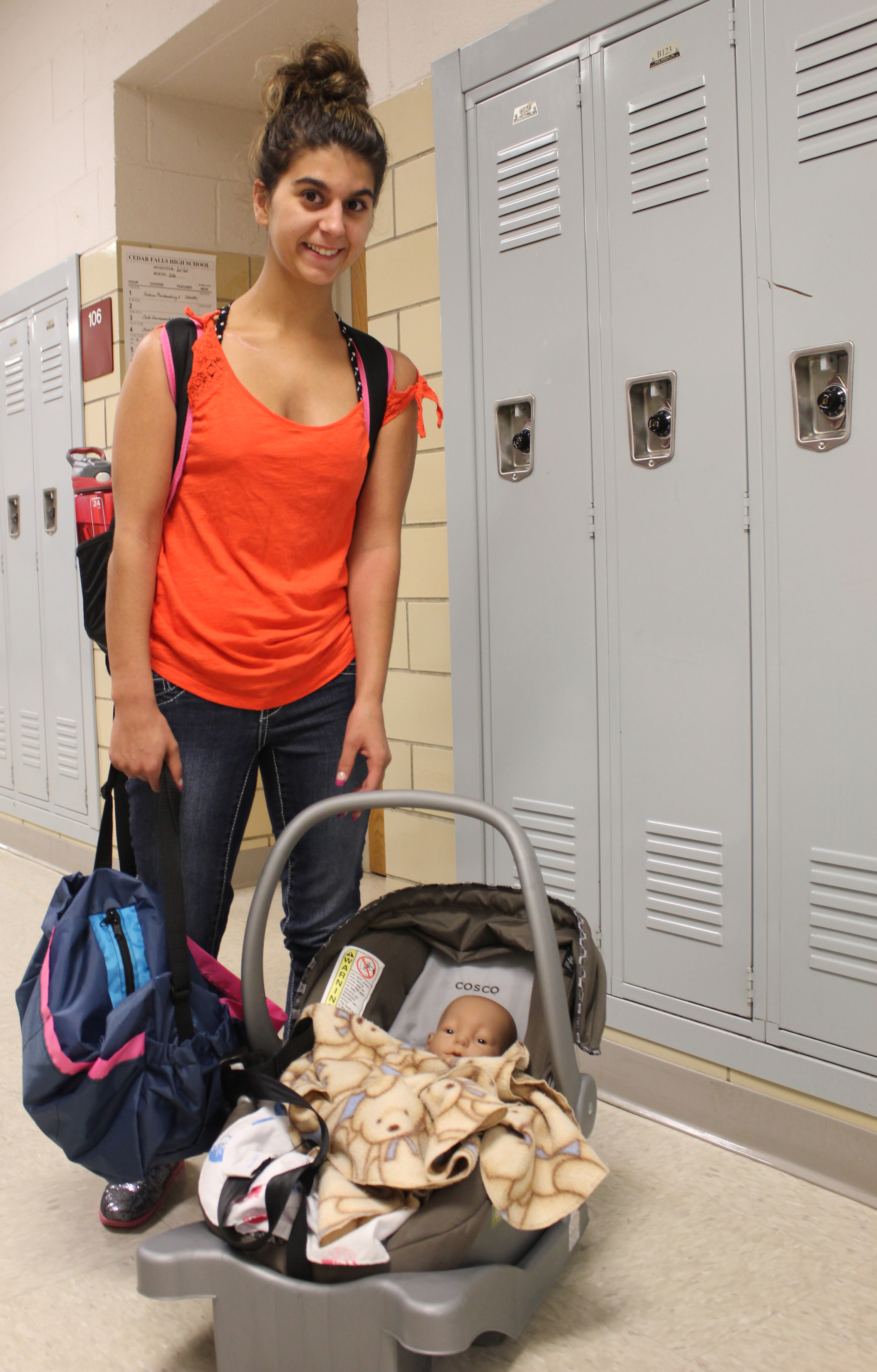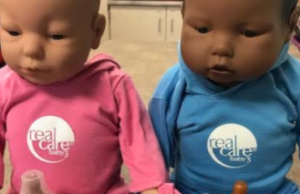Students begin roles with digital babies

Child development students will begin taking home the infamous simulator babies next week. Starting Monday, March 1, they will take turns with the three simulator babies Lin Schutte, the child development teacher, has, taking them into their care from 3 p.m. one day to 8 a.m. the next. Students have the opportunity to choose from an African female, a Caucasian male or a Native American male.
High school students take a baby home for one weeknight because, unlike junior high students, high school students’ social lives and work time conflicts present more scheduling problems. The junior high students enrolled take the babies home for an entire weekend.
Students spent this week preparing for the babies, learning about them and how they work. Each baby includes its own car seat, bottle, set of diapers, day clothes, sleepwear and outerwear.
Each baby weighs about 7.5 pounds, the average weight of a real newborn, and comes equipped with five internal sensors. Each sensor is responsible for detecting and recording various elements, including body temperature, body and head positioning, motion and the presence of the feeding bottle, diapers and specific outfits. For example, the baby is able to sense the difference between its two different diapers and several different outfits, and records each time it’s diaper or outfit is changed.
The babies also come with nearly 100 pre-programmed realistic sounds that simulate everything from laughing to coughing to crying. Students must pay attention to these sounds and respond to them in the appropriate way, just as a real parent would. “Everything you do with a real baby you have to do with these,” Schutte said.
This includes feeding the baby (yes, even at 2 a.m.), burping it, changing its diapers, changing its outfits, holding it, rocking it, supporting the head and neck, keeping it at a stable temperature and ensuring not to leave it sitting in its car seat too long. The list of requirements goes on and and on, and the baby’s sensors record when students perform any of them. Their letter grades for the project are based off of the sensors’ data. Schutte admitted that she has some control over the babies’ temperaments, including when and why they cry, but that each baby has its own individual temperament.
Each simulator baby, including all its accessories, is priced around $900, but Schutte said the costs are worth the benefits. Education about the risks and subsequent consequences of teen pregnancy has been shown to cause a decrease in unprotected teen sex. “[The babies] encourage students to think about their sexual activity and consider why making choices to be sexually active as a teenager might be high risk,“ Schutte said. “[Parenthood] is taxing physically, emotionally and financially. [Simulation] helps students decide if and when they want to become a parent.”
The babies also give students who do not have younger family members and have never baby-sat the opportunity to learn what it’s like to be around a baby.
Students may pay some prices of their own when taking care of the babies. Schutte told of a girl who was harshly scolded by an elderly woman for having a child at such a young age when she brought the baby to the mall. The student never had the chance to explain that the baby was just a simulator before the woman stormed off. While unfair, experiencing such public disdain or humiliation when caring for the simulator babies may further deter students from having unprotected sex.
There is reasonable evidence that the same make and model of simulator baby that is used in Schutte’s class was also used in the filming of the Oscar-nominated movie American Sniper. Schutte received an email from a representative of the manufacturer of the babies, Reality Works, hinting that the baby in the movie was the same simulator baby students here use.







You must be logged in to post a comment Login